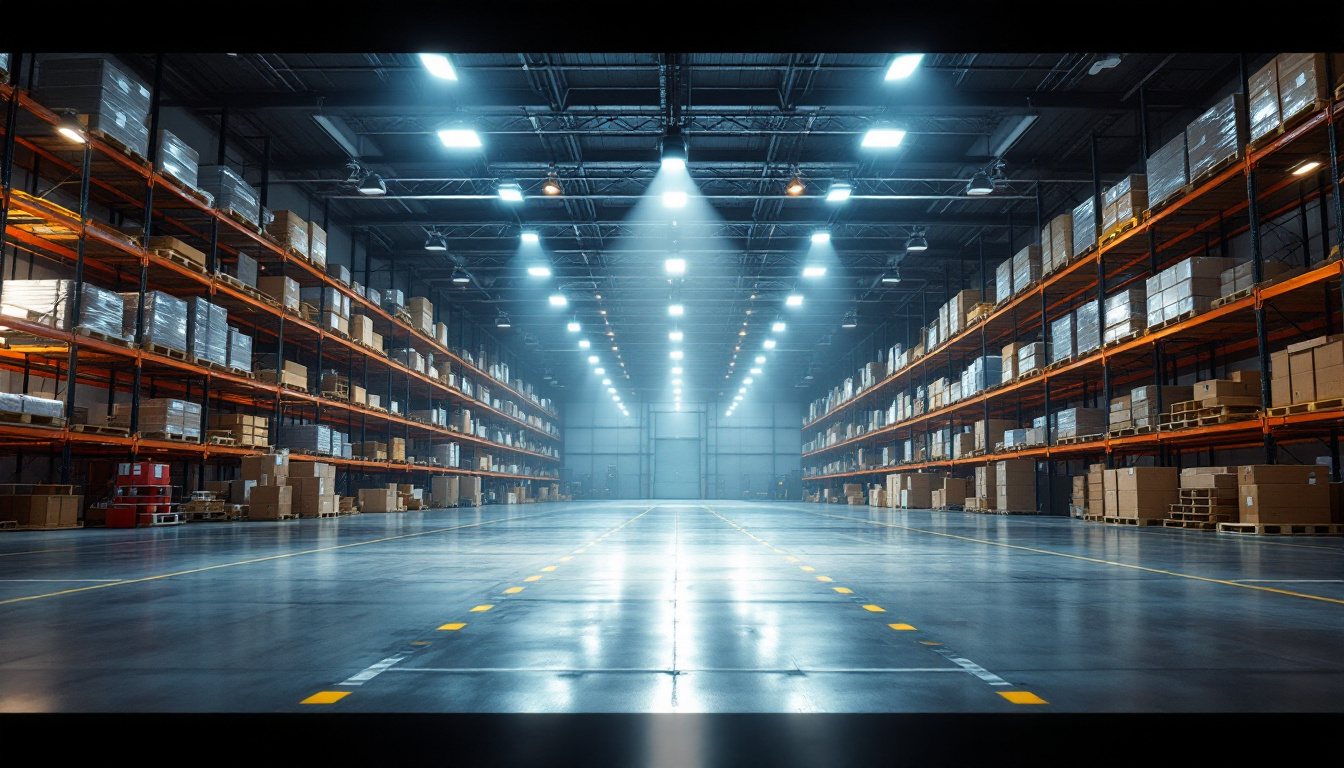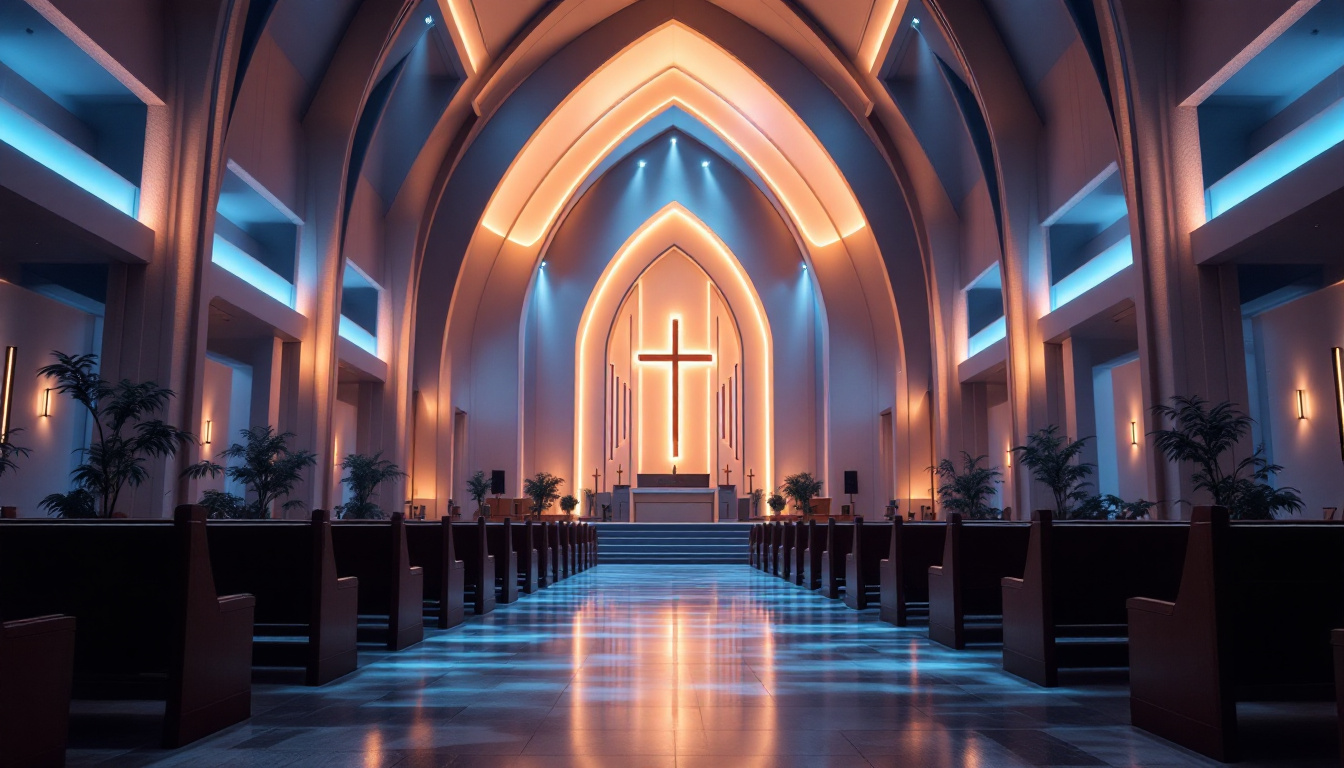

Effective lighting is a critical component of warehouse design and operation. It influences not only the safety and productivity of workers but also the overall efficiency of the facility. For lighting contractors, understanding the nuances of warehouse lighting is essential for delivering successful projects. This article delves into the key considerations, benefits, and best practices for warehouse lighting, ensuring that contractors are well-equipped to meet the demands of modern warehouses.
Warehouses are unique environments that require specialized lighting solutions. The vast spaces, high ceilings, and various operational areas necessitate a tailored approach to lighting design. Factors such as the type of goods stored, the layout of the warehouse, and the activities performed within the space all play a role in determining the appropriate lighting strategy. Moreover, energy efficiency and sustainability are increasingly becoming important considerations, as warehouses seek to reduce operational costs and their environmental impact. By integrating advanced lighting technologies, such as LED systems equipped with smart controls, warehouses can achieve significant energy savings while enhancing the overall working environment.
Different warehouses serve various purposes, from distribution centers to manufacturing facilities. Each type of operation has distinct lighting requirements. For instance, a distribution center may prioritize high visibility for picking and packing areas, while a manufacturing facility might need focused lighting for assembly lines. Additionally, cold storage warehouses require specialized lighting solutions that can operate efficiently in low temperatures without compromising visibility. Understanding these operational differences is crucial for selecting the right lighting solutions, as it ensures that the lighting not only meets safety standards but also supports productivity and efficiency across various tasks.
The layout of a warehouse significantly impacts lighting design. Open spaces may benefit from high-bay lighting fixtures that provide broad illumination, while narrow aisles may require task lighting to enhance visibility in specific areas. Additionally, the height of the ceilings must be considered, as it affects the type and placement of fixtures. Properly assessing the layout ensures that all areas receive adequate lighting without creating dark spots. Furthermore, the incorporation of motion sensors and dimming capabilities can optimize energy use by adjusting lighting levels based on occupancy and natural light availability, thus creating a more adaptable and cost-effective lighting solution. This not only improves visibility but also contributes to a safer working environment by reducing the risk of accidents in poorly lit areas.
Investing in appropriate lighting solutions for warehouses yields numerous benefits that extend beyond mere visibility. From enhancing safety to improving productivity, the advantages are multifaceted and can significantly impact the overall success of warehouse operations.
Safety is paramount in any warehouse environment. Poor lighting can lead to accidents, injuries, and even costly legal issues. Well-designed lighting systems help to illuminate pathways, loading docks, and high-traffic areas, reducing the risk of accidents. Moreover, proper lighting can aid in the identification of hazards, allowing workers to navigate the space safely. Additionally, the use of motion sensors and strategically placed lights can further enhance safety by ensuring that areas are well-lit only when needed, thus conserving energy while maintaining visibility.
Studies have shown that adequate lighting can boost worker productivity. When employees can clearly see their tasks, they are less likely to make mistakes and can work more efficiently. Furthermore, a well-lit environment can enhance employee morale, contributing to a more positive workplace atmosphere. This, in turn, can lead to lower turnover rates and increased job satisfaction. The psychological impact of lighting should not be underestimated; bright, natural-looking light can help reduce fatigue and eye strain, allowing workers to maintain focus for longer periods. Additionally, implementing adjustable lighting solutions can cater to different tasks and individual preferences, further optimizing the work environment.
Another significant advantage of modern warehouse lighting solutions is energy efficiency. Traditional lighting systems, such as incandescent bulbs, consume a considerable amount of energy and have a shorter lifespan. In contrast, LED lighting options are not only more energy-efficient but also have a longer operational life, which reduces the frequency of replacements. By investing in energy-efficient lighting, warehouses can lower their electricity bills and minimize their carbon footprint, contributing to a more sustainable operation. Furthermore, many energy-efficient lighting systems come with smart technology that allows for automated dimming and scheduling, ensuring that lights are only on when necessary, thus maximizing energy savings.
Selecting the appropriate lighting solutions for a warehouse involves several considerations, including fixture types, energy efficiency, and maintenance requirements. Each choice can significantly affect the overall performance of the lighting system.
There are various types of lighting fixtures suitable for warehouse environments. LED lighting has gained popularity due to its energy efficiency and longevity. High-bay LED fixtures are ideal for areas with high ceilings, while linear LED lights can effectively illuminate aisles and workstations. Additionally, task lighting can be employed in specific areas where focused illumination is necessary.
Energy costs can be a significant portion of a warehouse’s operating expenses. Therefore, selecting energy-efficient lighting solutions is essential for reducing overhead costs. LED lights consume less energy than traditional fluorescent or incandescent bulbs, resulting in lower electricity bills. Moreover, many energy-efficient lighting options qualify for rebates and incentives, further enhancing their cost-effectiveness.
Regular maintenance is vital for ensuring that warehouse lighting remains effective over time. Selecting fixtures that require minimal maintenance can save time and resources. LED lights, for example, have a longer lifespan than traditional bulbs, reducing the frequency of replacements. Additionally, incorporating smart lighting controls can help monitor and manage lighting performance, ensuring optimal functionality.
As technology continues to advance, smart lighting solutions are becoming increasingly popular in warehouse settings. These systems offer enhanced control and flexibility, allowing for tailored lighting experiences that meet the specific needs of the facility.
Smart lighting systems provide numerous benefits, including the ability to adjust lighting levels based on occupancy and natural light availability. This not only enhances energy efficiency but also improves the overall working environment. For instance, lights can automatically dim or brighten depending on the time of day or the number of employees present, ensuring optimal visibility without wasting energy.
Smart lighting solutions can also be integrated with other building management systems, such as HVAC and security. This integration allows for a more cohesive approach to facility management, enhancing overall operational efficiency. For example, if a security system detects movement in a specific area, the lighting can automatically activate, providing additional safety and security.
Lighting contractors must be aware of the various compliance standards and regulations that govern warehouse lighting. Adhering to these guidelines is essential for ensuring safety and functionality within the facility.
Different areas of a warehouse require varying levels of illuminance, measured in lux. For example, general storage areas may require around 100-300 lux, while picking and packing areas may need 300-500 lux for optimal visibility. Understanding these requirements is crucial for designing a lighting system that meets safety and operational standards.
Emergency lighting is another critical aspect of warehouse lighting design. In the event of a power failure or emergency situation, adequate emergency lighting ensures that employees can safely evacuate the premises. Compliance with local regulations regarding emergency lighting is essential for maintaining safety standards and avoiding potential liabilities.
A successful warehouse lighting project begins with a comprehensive lighting plan. This plan should encompass all aspects of the lighting design, from fixture selection to layout and controls.
Before implementing any lighting solutions, conducting a thorough lighting audit is essential. This audit should assess the current lighting conditions, identifying areas that require improvement. By gathering data on existing illuminance levels and employee feedback, contractors can develop a targeted lighting plan that addresses specific needs and challenges.
Collaboration with warehouse management and stakeholders is vital for understanding their specific lighting needs and preferences. Engaging with employees who work in the space can provide valuable insights into areas that require enhanced lighting or specific features. This collaborative approach ensures that the final lighting design aligns with operational goals and employee comfort.
As technology continues to evolve, so too do the trends in warehouse lighting. Staying abreast of these developments is crucial for lighting contractors looking to provide cutting-edge solutions.
Human-centric lighting focuses on creating environments that enhance well-being and productivity. This approach considers the natural circadian rhythms of employees, adjusting lighting levels and color temperatures throughout the day to promote alertness and comfort. Implementing human-centric lighting can lead to improved employee satisfaction and performance.
With growing awareness of environmental issues, sustainability is becoming a key consideration in warehouse lighting design. Contractors are increasingly seeking solutions that minimize energy consumption and reduce carbon footprints. Incorporating renewable energy sources, such as solar panels, and utilizing energy-efficient fixtures are steps toward achieving sustainability goals.
Effective warehouse lighting is a multifaceted challenge that requires careful planning, design, and implementation. For lighting contractors, understanding the unique needs of warehouse environments and staying informed about the latest trends and technologies is essential for delivering successful projects. From enhancing safety and productivity to embracing smart lighting solutions and sustainability practices, the right lighting strategy can significantly impact the efficiency and effectiveness of warehouse operations.
By prioritizing proper lighting design and implementation, contractors can ensure that their projects not only meet compliance standards but also create a safe and productive environment for warehouse employees. As the industry continues to evolve, embracing innovative lighting solutions will be key to staying competitive and meeting the demands of modern warehousing.
Ready to elevate your warehouse lighting projects to new heights? At LumenWholesale, we provide lighting contractors with the superior, spec-grade lighting solutions you need to outshine the competition. With our unbeatable wholesale prices and commitment to quality, you can trust that you’re getting the best value for your investment. Say goodbye to local distributor markups and hello to a vast selection of industry-standard lighting products. Plus, with free shipping on bulk orders, you can enjoy premium lighting without any hidden fees. Don’t compromise on quality or cost. Discover wholesale lighting at the best value today and bring unparalleled efficiency and effectiveness to your warehouse lighting projects with LumenWholesale.

Discover how church light fixtures are revolutionizing the lighting industry with innovative designs and sustainable solutions.

Discover essential tips and strategies for lighting contractors to prevent common pitfalls when installing light post bases.

Discover why sourcing pendant lighting in bulk from local distributors might not be the best choice.

Discover why purchasing outdoor lighting in bulk from local distributors might not be the best choice.
Get notified when NEW deals are released.
Optimize your budget with wholesale discounts.
Only top-quality, specification-grade lighting products.
No additional costs at checkout - what you see is what you pay.
We understand the unique needs of contractors.